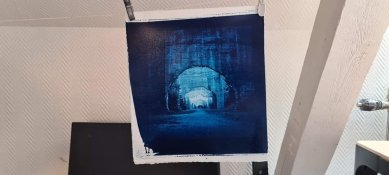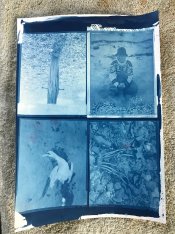Hello, I've come after help in my not entirely successful attempts to print cyanotypes.
I've been using sensitiser bought from Wet Plate Supplies here in the UK to Mike Ware's 'new' cyanotype formula but my results have been to say the least, mixed.
Here are a couple of my latest and probably most successful attempts:
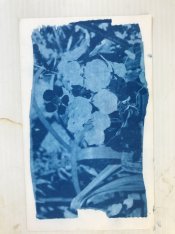
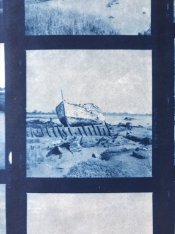

Many of my exposures have come out extremely faint, even with 10-20 minute exposures in direct summer sun, contrary to the one minute estimates quoted in his instructions on the method. I have mostly been printing from various negatives I have, 5x4 being the largest though I've also done some tests with smaller sizes. The negatives are doubtless not as contrast heavy as they should be for this but I so far I'm just trying to see what I can get.
Being in London where the water is rather hard I have been tending to add some citric acid (of varying dilutions as tests) to my sensitiser, seemingly to little effect. I haven't quite had the willingness to go out and by some expensive buxton paper to see if this is my major problem, I wanted to see if I could get some reasonable results before I dived in headlong to make some big and potentially costly mistakes.
Most of my initial tests have been with off cuts of various papers scrounged while I was still at art school, from arches print papers to somerset to zerkal. Having used up most of these I moved to standard daler-rowney cartridge paper.
I'm slightly running out of ideas as to what could be the problem here, my thoughts currently being:
* Is my paper too alkaline to work
* Is the sizing wrong
* Is the sensitiser I was sold off (something I'm suspecting given it seems to be rather blue-ish and I was led to believe it should be rather more yellow? It's yellow when on the paper, blue in a pot)
* Is my water too soft when washing
I've been using sensitiser bought from Wet Plate Supplies here in the UK to Mike Ware's 'new' cyanotype formula but my results have been to say the least, mixed.
Here are a couple of my latest and probably most successful attempts:



Many of my exposures have come out extremely faint, even with 10-20 minute exposures in direct summer sun, contrary to the one minute estimates quoted in his instructions on the method. I have mostly been printing from various negatives I have, 5x4 being the largest though I've also done some tests with smaller sizes. The negatives are doubtless not as contrast heavy as they should be for this but I so far I'm just trying to see what I can get.
Being in London where the water is rather hard I have been tending to add some citric acid (of varying dilutions as tests) to my sensitiser, seemingly to little effect. I haven't quite had the willingness to go out and by some expensive buxton paper to see if this is my major problem, I wanted to see if I could get some reasonable results before I dived in headlong to make some big and potentially costly mistakes.
Most of my initial tests have been with off cuts of various papers scrounged while I was still at art school, from arches print papers to somerset to zerkal. Having used up most of these I moved to standard daler-rowney cartridge paper.
I'm slightly running out of ideas as to what could be the problem here, my thoughts currently being:
* Is my paper too alkaline to work
* Is the sizing wrong
* Is the sensitiser I was sold off (something I'm suspecting given it seems to be rather blue-ish and I was led to believe it should be rather more yellow? It's yellow when on the paper, blue in a pot)
* Is my water too soft when washing


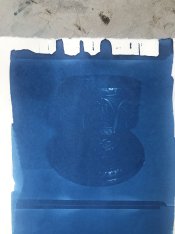
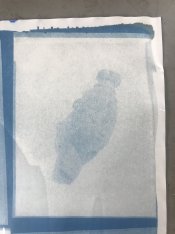
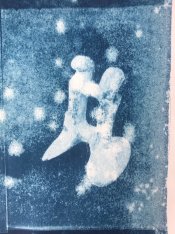


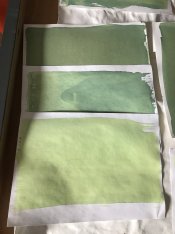
 Experiment on the paper you use.
Experiment on the paper you use.